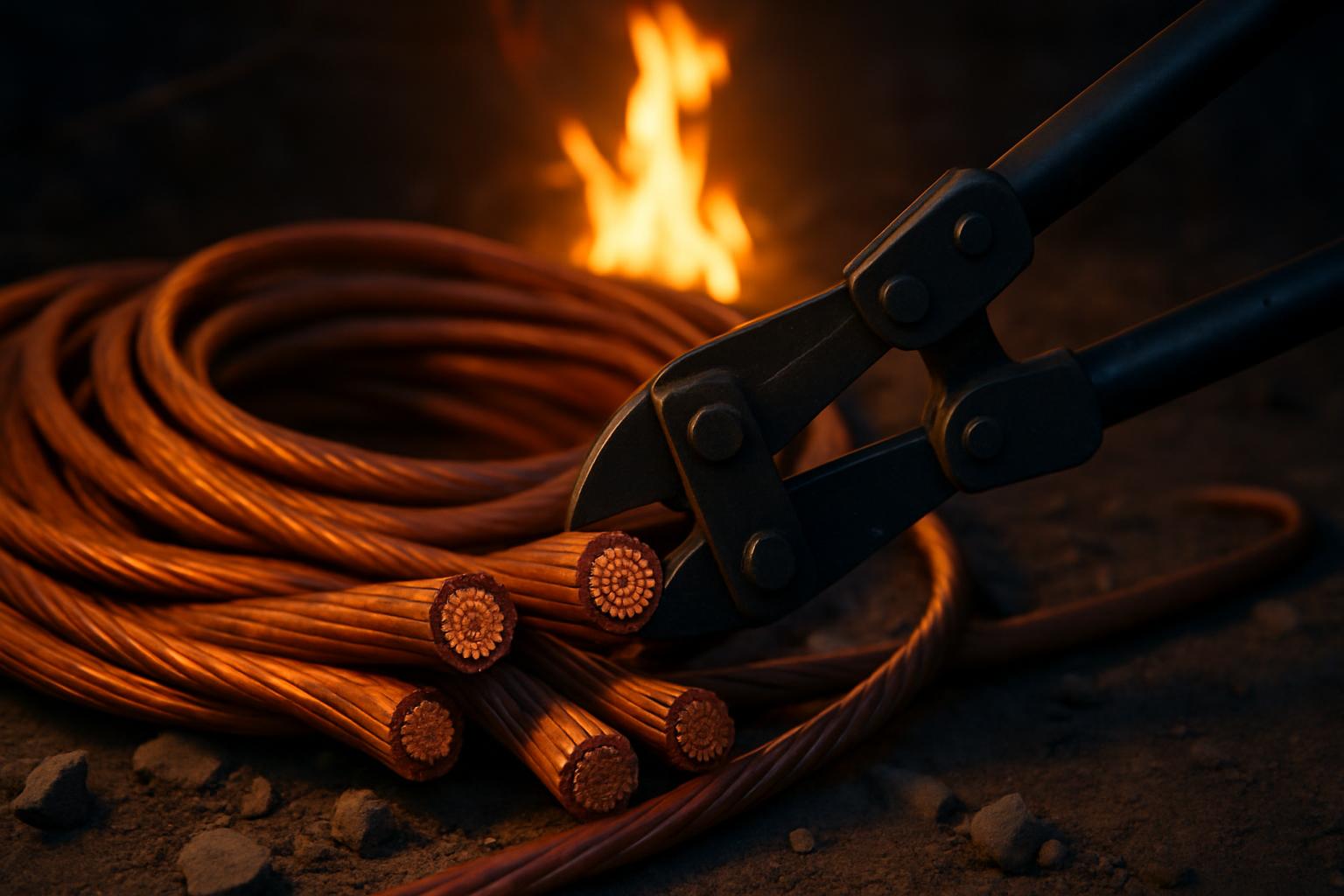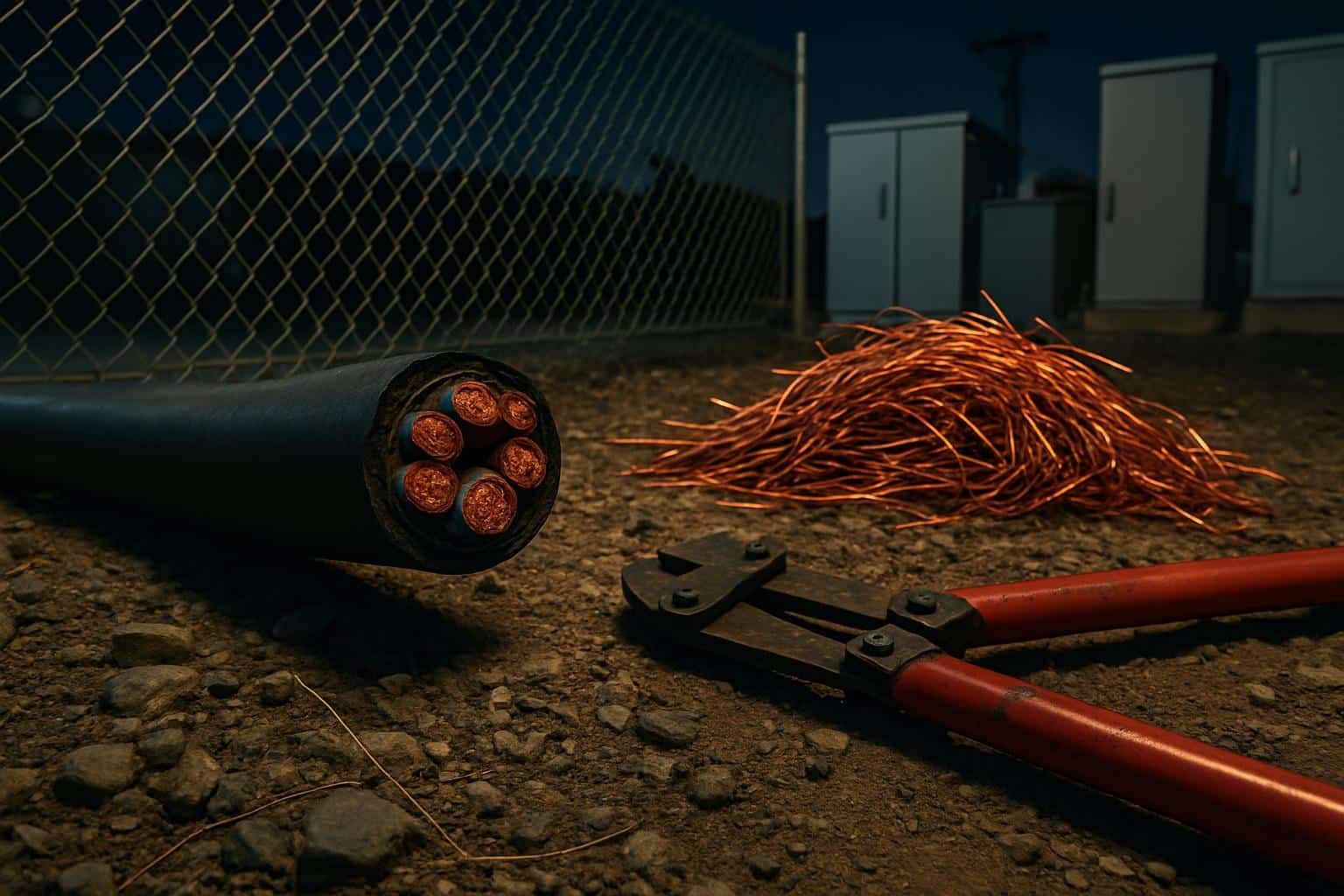America’s cable networks are facing a security crisis that isn’t related to zero-days or nation-state APTs. Instead, an escalating campaign of copper theft and infrastructure vandalism is slicing lines and knocking out service, disrupting operations across entire regions.
The danger is physical, not remote, and relentlessly local
During a recent SCTE TechExpo session, operators’ execs detailed a daily grind of repairs motivated by physical assaults on plant. The attacks are not sophisticated cyber intrusions; they involve bolt cutters and reciprocating saws targeting aerial lines, pedestals, and cabinets.
- The danger is physical, not remote, and relentlessly local
- Why thieves still covet copper despite rising fiber use
- How outages spread through communities after cable cuts
- What the numbers show about theft and vandalism trends
- Industry Responses “From Fiber to Scrap Yards”
- Policy and enforcement gaps around scrap metal sales
- What operators should do now to blunt copper theft risks

Even as official warnings focus on state-backed organizations like Volt Typhoon, the public’s evident frustration has been mounting with localized service outages tied to theft, cable providers said. When a line goes out, customers don’t blame the operator—they cast aspersions on whoever pulled it off a pole at 2 a.m.
Why thieves still covet copper despite rising fiber use
The value of the copper in scrap—usually more than $3 a pound at many recyclers—continues to be a powerful lure. Thieves hit anything that appears to have metal of any resale value, even if there’s not—which is why some fiber runs are destroyed or sliced into despite having “no scrap value.”
Cable executives and standards leaders point out that fiber already infuses operator networks. CableLabs believes that about 94% of the average HFC footprint is fiber, leaving the very periphery (and some intermediate facilities) where copper can still be found—and removed.
That last fraction of a mile is where the trouble accumulates: short distances from neighborhood nodes to buildings, and legacy plant and power infrastructure that make use of copper. It’s also where opportunistic theft can pass unnoticed until service starts to falter.
How outages spread through communities after cable cuts
Blown lines can mean more than a single home upended. If a vandal attacks in the right place, an outage can ripple through hundreds of subscribers who receive service over broadband for voice and video. Recovery for aerial damage can be swift, but recovery that involves underground plant stretches far beyond a full workday.
There are truck rolls, splicing crews and replacement materials, traffic control, and customer credits, the industry’s field teams say. The wider fallout lands on small businesses and remote workers who are suddenly left without connectivity.
What the numbers show about theft and vandalism trends
An analysis commissioned by the NCTA counted more than 5,770 thefts and instances of vandalism in a recent six-month period. Not all the culprits were after copper, and some apparently had no idea what they were attacking, hitting fiber-optic lines or even wireless towers with no copper to steal—testament to the mix of greed, ignorance, and occasional sabotage driving the trend.
Police officials say a subset of cases demonstrate motive beyond making money—attempts to disrupt communications. But the vast majority are transactional crimes born of a robust market for metal that has little paper trail and trace.

Industry Responses “From Fiber to Scrap Yards”
Operators are redoubling their investment in “fiber-deep” upgrades that reduce the amount of copper deployed into the field, reducing the attack surface at a time when such investments can breathe new life into network capacity. They also roll out hardening measures: upgraded pedestal locks, tamper alarms on cabinets, cameras at repeat targets, and SOC detection in the NOC.
Some countermeasures are decidedly low-tech. For fiber spans, to reduce cutting of already fiber-limited areas and support any needed repairs, we have placed “no scrap value” signs on our material. Cable security teams go into camps to explain that most contain nothing worth stealing, with mixed results.
Recyclers are a critical choke point. Operators and investigators say they have made strides in training scrap yards to turn away burnt or obviously salvaged telecom copper. Similar cross-industry moves are underway elsewhere in the world—Bell Canada has already reported thefts, while UK EV charging company InstaVolt has introduced sensors and real-time notifications to prevent cable cuts at its stations.
Policy and enforcement gaps around scrap metal sales
There is increasing momentum in statehouses to tighten the rules around the sale of metal. Industry groups say two dozen states are considering initiatives that would require ID checks, transaction logs, and harsher penalties for the sale of burnt wire or material lacking an established provenance.
California has introduced a bill, AB 476, focused on addressing copper theft by imposing greater responsibility for scrap transactions. Trade associations and operators regard these laws as necessary supplements to operational defenses, but enforcement resources are constrained.
Federal agents say they’ll be there when called, but the local priorities tend to zero in on violent crime. Even within the industry, there is a clear consensus: arrests alone will not solve this problem driven by quick cash, few records, and repeat offenders.
What operators should do now to blunt copper theft risks
The playbook for the near term combines prevention with speed. Strengthen last-mile plant, build out fiber footprint, tag inventory and cables to the nines, and rely on telemetry to quickly detect unexpected power or signal levels that will point you in the direction of a cut. Rapid detection reduces the window of repair and constrains the customer blast radius.
Longer term, operators are moving toward an all-fiber access and smarter edge gear with tamper detection built-in. Combined with stricter scrap regulations and better recycler training, that shift can starve the resale pipeline while reducing the amount of copper on the street.
Cyber adversaries are always going to be there, but the constant drumbeat of physical theft is about resilience right now. For cable networks, uptime has increasingly become as much about protecting the pole and the pedestal as it is about the core and the cloud.

